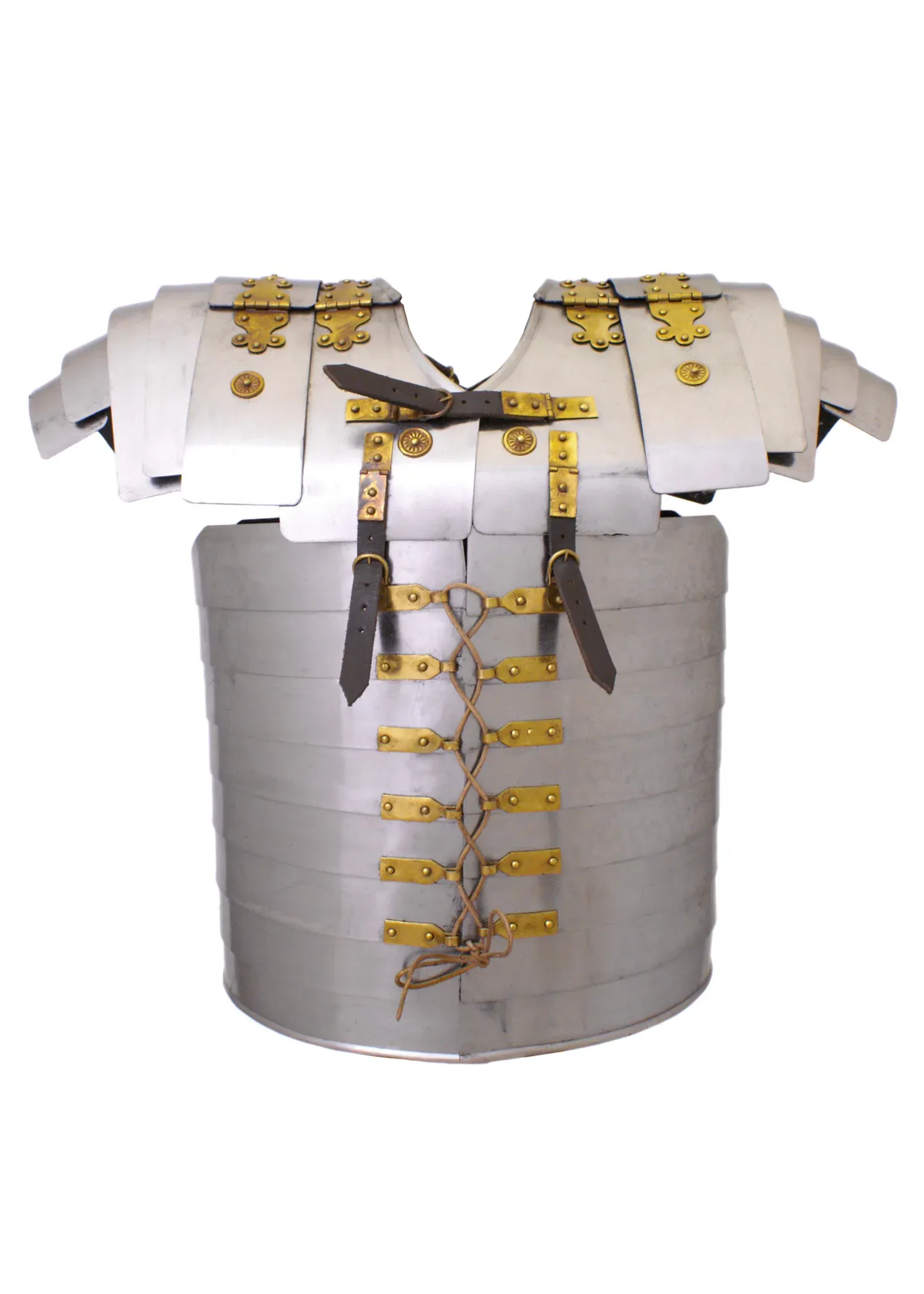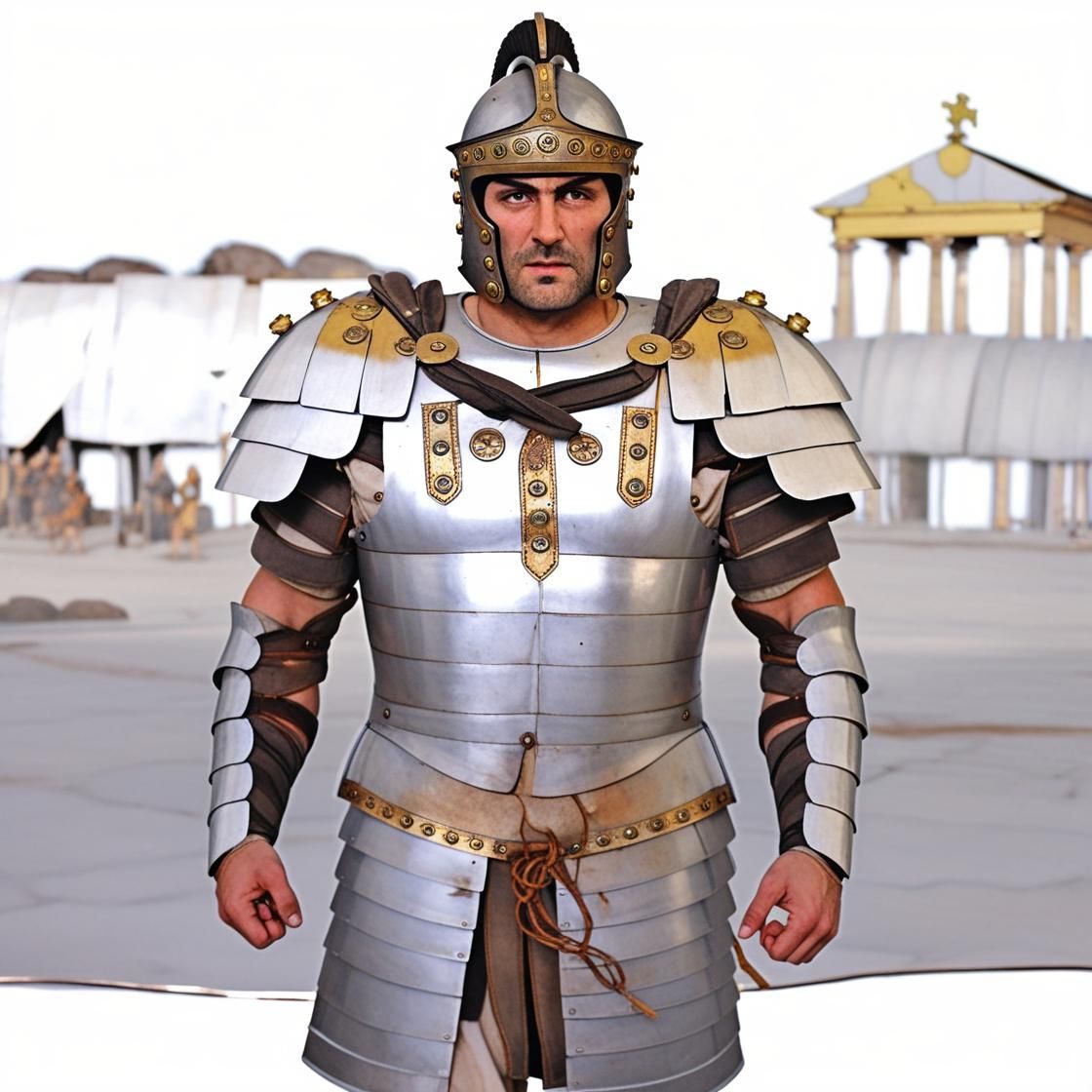What is a Lorica Segmentata?
The **Loricata Segmentata** is an iconic armor of the Roman Empire, primarily used by legionaries during the High Empire, specifically between the 1st century BC and the 3rd century AD. Its design is characterized by being segmented, composed of individual metal plates connected through internal leather strips. This arrangement allows for greater flexibility and mobility for the soldier who wears it.

Description and Structure
The structure of the **Loricata Segmentata** is innovative for its time. It consists of metal bands, typically made of iron, that are placed horizontally across the chest and back of the soldier.
- These bands are joined by vertical leather straps, increasing mobility.
- It opens from one side, facilitating adjustment and removal.
Additionally, it features other vertical metal bands in the shoulder area, ensuring protection. Although the arms remain unprotected, the typical Roman formation minimizes their exposure.

Evolution and Types
Over the centuries, the **Loricata Segmentata** evolved, adapting to the needs of combat:
- Loricata Segmentata Kalkriese: The most primitive type, used between 20 BC and 250 AD, even during the crucial Battle of Teutoburg.
- Loricata Segmentata Corbridge: Notable for the robust connection between the upper and lower parts via buckles and hooks, featuring large pectoral plates.
- Newstead: This variant increased the hinges at the shoulders, eliminating straps and further improving mobility.
Use and Advantages
The **Loricata Segmentata** was a distinctive feature of the Roman legionary and, occasionally, of the praetorians. However, auxiliary forces tended to use other armors such as **lorica hamata** (chainmail) or **lorica squamata** (scale armor).
The advantages of the **Loricata Segmentata** were significant:
- It provides superior protection compared to chainmail, although there are debates about the extent of its advantage.
- Mobility is one of its standout features, allowing the user to move freely in combat.
Disadvantages and Disappearance
Despite its benefits, the **Loricata Segmentata** had drawbacks that led to its disappearance:
- It requires a high level of skill for its manufacture, which significantly increases costs.
- The economic crises of the 2nd and 3rd centuries led to a shift towards more economical protection solutions like chainmail.
Iconography and Representation
The **Loricata Segmentata** has been immortalized in numerous historical reliefs. A famous example is its representation on the Trajan's Column, which depicts legionaries equipped with the Corbridge model. Although there may be variations for propagandistic reasons, these representations help us better understand its use and historical significance.
In conclusion, the **Loricata Segmentata** symbolizes the innovation and strength of the Roman army during a crucial period of its history. Its segmented design allowed for a unique combination of protection and mobility, although the complexity and cost of its manufacture limited its use to economically less conflictive periods.
















